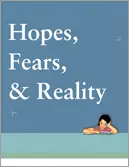Like previous editions of Hopes, Fears, & Reality, the 2007 report explores some of the most challenging issues currently facing the charter school movement. This chapter examines the growth of charter schools from 2004-2007 and explores how charter schools differ from traditional public schools in their curricular approaches and school structure. Jon Christiansen and Robin Lake find that from 2004-2007 more than 1,200 new charter schools were opened nationwide, however growth rates still appear to be slowing nationwide and new schools are heavily concentrated in a small number of states. Nationwide, the number of annual school closures is on the rise.
This chapter also delves into how charter schools differentiate themselves from traditional public schools in their approaches to teaching and learning. What emerges is that charter schools are more likely to use non-traditional approaches to school structure and are more oriented to “at-risk” students. Charter schools are also more likely to employ younger teachers, without traditional teaching credentials, who report that they work about the same number of hours as in traditional schools, but but seem to have more influence on school practice and policy. These findings suggest that charter schools may be fulfilling some of their early promise for innovation around instruction, teacher hiring, and professional practice.






